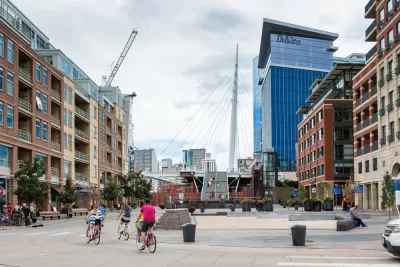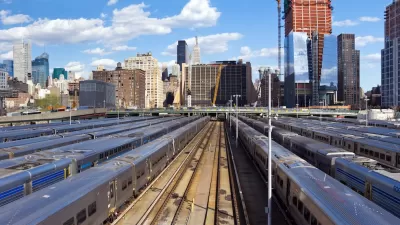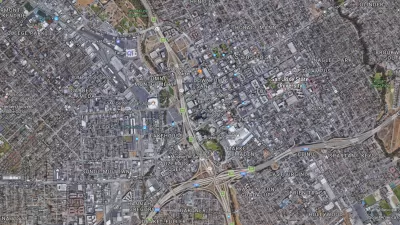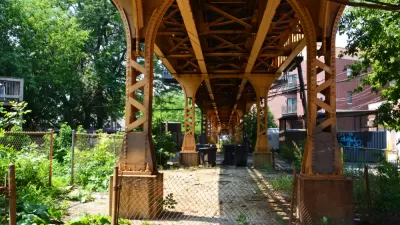Low-income residents are more likely to use transit, and transit needs riders. The relationship seems ripe for mutual benefit.

Eleni Bardaka, an assistant professor at North Carolina State University, and John Hersey, a senior TOD associate of the Regional Transportation District (RTD) in Denver, write a guest post for Transit Center to share survey research exploring the travel habits of people who live near transit.
"Bardaka and Hersey’s work confirms that low-income housing residents use transit a lot more than market-rate residents, reinforcing the case for affordability in transit-oriented developments," according the introductory text supplementing the guest post.
In the words of Bardaka and Hersey:
Transit systems provide users with a ladder to economic opportunity, connecting individuals to home, work, education, healthcare, and myriad metropolitan destinations. This ladder is most critical to low-income, transit-reliant households with little means to afford auto-oriented lifestyles.
The need to state these housing and mobility facts becomes more and more pressing as more and more transit-rich cities become homogeneously affluent cities, according to the article.
Without equitable planning and policies in place, major transit investment can generate new demand for development in areas that quickly transition from economic afterthoughts to high-end enclaves of housing, retail, and offices catering to higher-income earners while leaving behind low-income households who could most benefit from improved transit access. Transit agencies may then find themselves the victims of their own expansion, setting in motion a speculative real estate market that delivers high-rent land uses but few new transit riders.
For a model of equitable planning—rather than the model of gentrifying, ridership depleting transit oriented development—the article looks to Denver's eTOD effort that relies on a variety of private and public sector partners and already has a proof of concept in a development at the 38th and Blake Station on the RTD system.
Hat tip to Angie Schmitt for sharing the article.
Previous Planetizen articles on similar subjects:
FULL STORY: Transit-Oriented Development is More Transit-Oriented When It’s Affordable Housing

Manufactured Crisis: Losing the Nation’s Largest Source of Unsubsidized Affordable Housing
Manufactured housing communities have long been an affordable housing option for millions of people living in the U.S., but that affordability is disappearing rapidly. How did we get here?

Americans May Be Stuck — But Why?
Americans are moving a lot less than they once did, and that is a problem. While Yoni Applebaum, in his highly-publicized article Stuck, gets the reasons badly wrong, it's still important to ask: why are we moving so much less than before?

Research Shows More Roads = More Driving
A national study shows, once again, that increasing road supply induces additional vehicle travel, particularly over the long run.

Which US Rail Agencies Are Buying Zero-Emissions Trains?
U.S. rail agencies are slowly making the shift to zero-emissions trains, which can travel longer distances without refueling and reduce air pollution.

San Diego School District Approves Affordable Housing Plan
The district plans to build workforce housing for 10 percent of its employees in the next decade and explore other ways to contribute to housing development.

Lawsuit Aims to Stop NYC’s ‘City of Yes’ Zoning Reforms
A lawsuit brought by local lawmakers and community groups claims the plan failed to conduct a comprehensive environmental review.
Urban Design for Planners 1: Software Tools
This six-course series explores essential urban design concepts using open source software and equips planners with the tools they need to participate fully in the urban design process.
Planning for Universal Design
Learn the tools for implementing Universal Design in planning regulations.
City of Moreno Valley
Institute for Housing and Urban Development Studies (IHS)
City of Grandview
Harvard GSD Executive Education
NYU Wagner Graduate School of Public Service
City of Cambridge, Maryland
Newport County Development Council: Connect Greater Newport





























